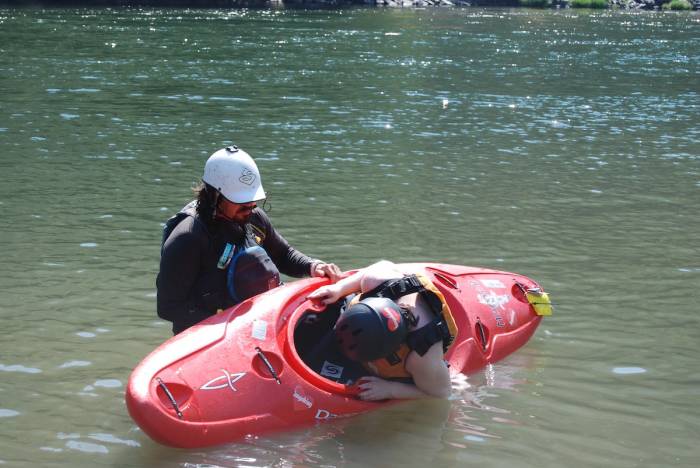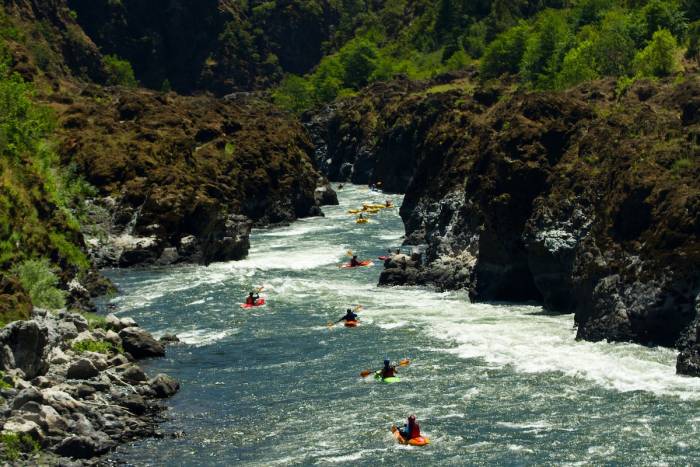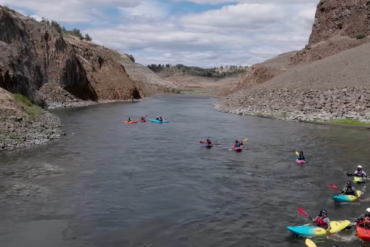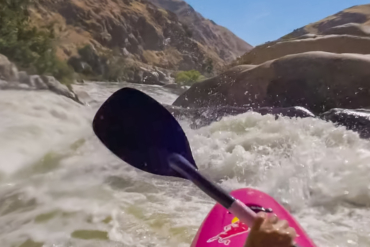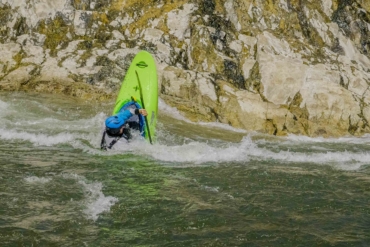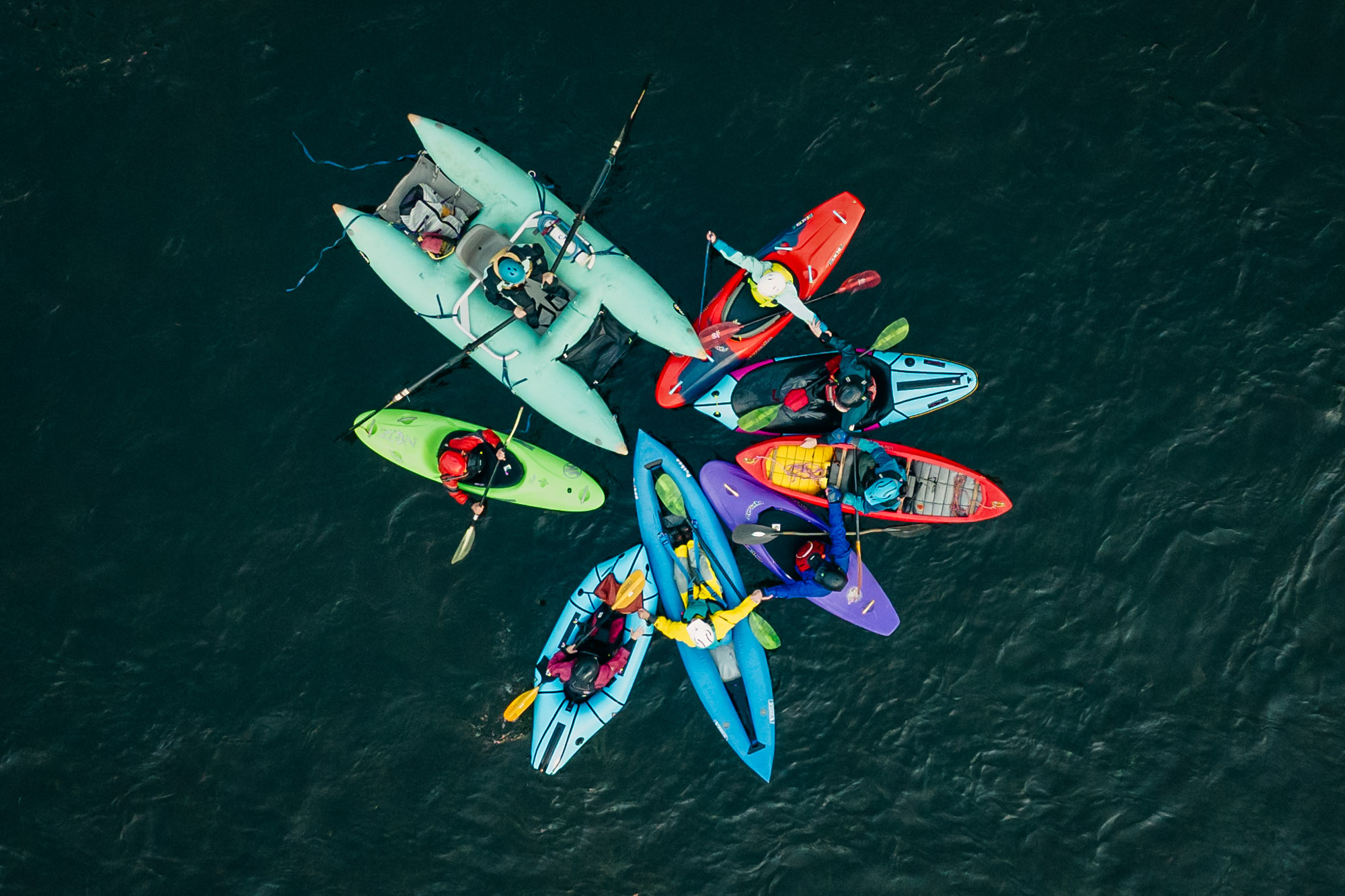You love to paddle, and there’s nothing better than the freedom of being on the water. Working on the river could be the perfect job for you.

If that sounds like you, an American Canoe Association (ACA) certification is a prerequisite. As a veteran ACA teacher, I’ve trained instructors in multiple disciplines. My experience also includes racing in flatwater marathons, Olympic sprinting, and guiding river expeditions on three continents.
So you want to be a kayak instructor? Read on to see if it’s for you.
The birth of the ACA program is a funny story, and it all starts with the movie “Deliverance.” In the movie, four adventurers with more bravado than skill head out for a multi-day canoe trip on a fictitious Southeastern river. Along the way, mayhem ensues.
The movie debut inspired the general public to get on the water. And they promptly started getting themselves killed. The United States Coast Guard monitored the phenomenon and requested proposals to initiate a national instructional paddling program.
The ACA, which was founded in 1880 and had always had an active instructional component, won the bid. As a testament to the tie between the ACA and “Deliverance,” many if not all of the stunt doubles ended up being the early leaders of the ACA’s instructional program.

Today, the ACA has certifications for most paddling disciplines. “Certification” essentially means that you have been trained, meet a minimum standard, and can purchase liability insurance through the ACA’s provider. Basically, you’ve proven yourself an acceptable risk to the insurance carrier.
If you’re seeking employment with an outfitter or school, an ACA certification indicates a level of proficiency. The entity and its insurance carrier are more likely to view you as an acceptable risk.
Now that you have the backstory, you need to know how to proceed and what to expect.
ACA Certifications

Not all ACA certification courses within a discipline are created equal. The ACA sets a minimum national standard with a defined curriculum. And it’s just that – a minimum standard.
Many Instructor Trainers (ITs) and Instructor Trainer Educators (ITEs) supplement that curriculum. Some might focus more on classroom management, technical paddling skills, or safety and rescue skills. Often, the areas of focus ITs and ITEs choose will be a direct result of feedback from previous classes and newly minted instructors when they get out in the field.
Kayak Instructor Trainers

Not all ITs and ITEs are the same. Like any mentor or instructor, your IT’s paddling experiences will influence the course. ITE Kent Ford has likely conducted more certification courses than anyone. His focus is on prepping instructor candidates to safely lead students down a Class III run.
You might sign up for a cert course where your IT has an extensive competitive background (and lots of video analysis from national team coaches). This instructor might focus more on technical paddling skills. In either case, before signing up, have a conversation with your mentor to ensure that you vibe with their core philosophies.
You’re not here to play

Some of my instructor candidates have taken tasks very lightly. They’ve stated the certification environment is not realistic, that they would perform differently in a “real” class that they were leading. Let me assure you – this is for real.
At the end of the day, we’re putting our stamp of approval on your performance and telling the world you’re a prudent professional – that you’re trained in our lineage and represent us. If you can’t perform a given task now, why would I expect that would change? Would I feel confident in sending my family out on the river with you?
You must be an efficient paddler
Just because you paddle Class V, it doesn’t mean you know how to paddle. Being a proficient paddler, like everything in life, is about efficiency. Give me two paddlers and set up a difficult move on Class II water. The paddler who makes the move with the fewest strokes is the “better,” more efficient paddler.
If you haven’t had formal paddlesports instruction from an examiner, national team coach, etc., seek it out. In many cases, you can meet with your IT a few weeks prior on flatwater to hone technique. My experience showed me that technical paddling ability is the No. 1 reason candidates do not certify at the desired level.
In many cases, once they see themselves on flatwater on video, they don’t believe the images. What they thought that they looked like does not mesh with reality.
You have to be able to teach

The realm of “teaching” is far reaching – from interaction with students to identifying how to best structure and deliver a lesson, managing a classroom, teaching tools, and your own level of personal organization. As noted author Steven Covey said, if you want to really learn something, learn it like you’ll have to teach it.
Don’t bring a playboat
Again, you’re not here to play. Your boat is your workstation from the start bell to finish bell. It will have to carry lunches, drinks, teaching materials, FA kit, and an extra paddle. You need something with volume and hull speed so that you can catch your student when they get flushed downriver. And, you need a stable and quick rescue platform.
Become a better kayak leader
Our goal is not to make you an instructor, but to make you a more efficient paddler. Most who have never had formal paddlesports training are overwhelmed once we start to peel the technical layers back. Our goal is to make you a more efficient paddler and a better leader on and off the water. Certification is a byproduct of that process.
There will be homework
You may have 10 hours with us during the day, but there will be homework. Clear your schedule.
Be professional

Brush your teeth. Shower. Wash your kit before showing up. Show up on time. That sticker on your boat that may offend a student? Get rid of it.
Whatever the outcome of your course, this is a journey: When you earn your black belt in a martial art, you think you’ve arrived. However, you quickly find out you’re on rung one of the real ladder of achievement. Earning your instructor certification is the same – it’s just the start.
There are other disciplines and certifications to explore. There are races and national teams to try out for. All of this will hone your abilities in your primary domain. There are opportunities to learn from other instructors, ITs, ITEs, and coaches. In many cases, your certifications and professionalism may see you invited to work on some of the most storied and revered rivers in the world.
Most importantly, I learn every day from my students. Treat each day like you are a beginner, not an expert, and each will be rewarding.
Becoming a Kayak Instructor: Is It Worth It?
Completing the certification course will greatly enhance your depth of knowledge. Those hours of modeling perfect technique for your students, regardless if you are demoing a stroke or paddling to the take-out, pays huge dividends in building your own neuromuscular pathways.
You are “on” as long as your students have eyes on you. And yes, there are definitely days where it becomes a “job.” The payback for me, however, is running into a former student or instructor candidate years or decades later, listening to their excitement, and knowing that I fueled their stoke in a sport I’m passionate about.
For more information on becoming certified as a kayak instructor, visit the ACA’s website.

